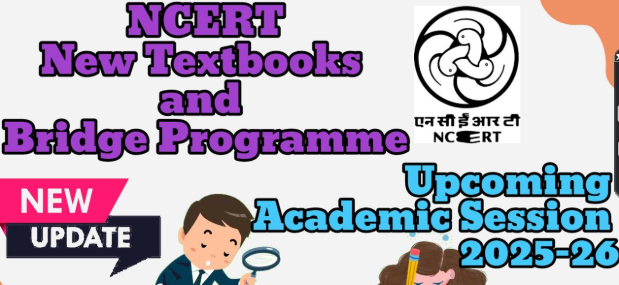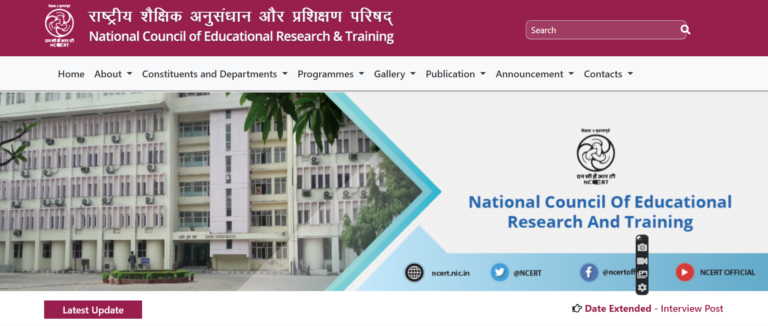
NCERT New Bridge Programme is designed for Grade IV based on NEP-2020 and NCF-SE-2023
Introduction
The face of Indian education is changing—and for the better. With the National Education Policy (NEP) 2020 paving the way for a more inclusive and flexible education system, the National Council of Educational Research and Training (NCERT) has introduced the Bridge Programme for Grade IV. Designed with the vision of NEP-2020 and structured around the latest National Curriculum Framework for School Education (NCF-SE) 2023, this initiative is meant to ease students into the academic rhythm post-pandemic and address the learning gaps.
Understanding the Bridge Programme
What Exactly is the NCERT Bridge Programme?
Think of the Bridge Programme as a friendly guide helping children hop from one academic level to the next without tripping. It’s a short-term, well-planned educational plan that supports Grade IV students in catching up on essential skills they might have missed.
Why Was It Introduced?
The pandemic widened existing learning gaps. Many students, especially in early grades, lost foundational understanding in key areas like math and language. This programme is a remedial step to bridge those gaps, aligning with the NEP’s vision of foundational literacy and numeracy for all.
Target Audience – Who is it For?
Primarily, this programme is crafted for Grade IV students across Indian schools, particularly those transitioning from unstructured or disrupted learning environments. However, it’s flexible enough to be adapted for students in other grades who require academic support.
The Framework Behind the Programme
Goals and Objectives
Holistic Learning Approach
Instead of rote memorization, the programme promotes critical thinking, creativity, and curiosity.
Student-Centric Methodology
Lessons are designed to be interactive and engaging, making learning a joyful experience rather than a chore.
Alignment with NEP-2020
The Bridge Programme perfectly echoes NEP-2020’s vision of a student-friendly, inquiry-based education system, with a strong focus on foundational skills and socio-emotional development.
Integration with NCF-SE-2023
The NCF-SE-2023 offers the backbone for this initiative. With its emphasis on competency-based learning and flexibility in pedagogy, it ensures that the Bridge Programme is not just a patch-up solution but a transformative tool.
Key Features of the Grade IV Bridge Programme
Activity-Based Learning
Learning isn’t limited to textbooks. Students engage in hands-on activities, storytelling, group work, and discussions to build understanding in real-life contexts.
Emphasis on Foundational Literacy and Numeracy
The spotlight is on the basics of reading, writing, and arithmetic. Without a solid foundation, higher learning just won’t stick.
Inclusivity and Accessibility
Materials are developed with inclusivity in mind—catering to diverse learning needs, including those of children with disabilities and language barriers.
Assessment Reforms
Goodbye, exam stress. The programme uses formative assessments, like daily observations, projects, and peer feedback, to measure learning without pressure.

Implementation and Structure
How the Programme is Rolled Out in Schools
NCERT works in tandem with state education departments to train teachers, distribute resources, and ensure smooth delivery in classrooms.
Duration and Modules
Typically running for 6–12 weeks, the programme is divided into modules focusing on core subjects like Math, Language, and Environmental Studies, all packed with joyful learning experiences.
Role of Teachers and Training
Teachers play a pivotal role. They undergo special orientation programmes to effectively deliver the content, use new teaching tools, and adapt to individual student needs.
Benefits of the Bridge Programme
Closing the Learning Gap
By revisiting key concepts, the programme ensures no child is left behind. It’s about building bridges, not walls.
Boosting Confidence Among Learners
Nothing kills learning like fear. The friendly, engaging style of the Bridge Programme helps students regain lost confidence.
Smooth Transition to Grade-Level Curriculum
Once foundational skills are back in place, students can more easily grasp new concepts in Grade IV and beyond.
Challenges and Limitations
Infrastructure and Resource Constraints
Not all schools have access to the required materials, trained staff, or infrastructure, especially in rural regions.
Teacher Preparedness
While training is provided, not every educator feels confident using modern teaching methods, especially those accustomed to traditional formats.
Parental Involvement
For real success, parental support is key. Unfortunately, not all parents are in a position to actively support their child’s learning at home.
Conclusion
The NCERT New Bridge Programme for Grade IV is more than just a curriculum—it’s a movement. Grounded in the values of NEP-2020 and crafted around the framework of NCF-SE-2023, it brings students back on track with joy, creativity, and compassion. Yes, there are hurdles, but with continued support and innovation, this programme can truly reshape foundational learning in India.
FAQs
1. What is the main aim of the NCERT Bridge Programme?
The goal is to help Grade IV students catch up on essential skills in literacy and numeracy that may have been disrupted due to past academic interruptions.
2. How long does the Bridge Programme last?
It generally spans 6–12 weeks, depending on the school and the extent of learning gaps.
3. Is the programme only for public schools?
While mainly implemented in government schools, private institutions can also adapt the programme if needed.
4. How does it benefit Grade IV students?
It builds confidence, strengthens basic concepts, and ensures a smoother transition to the regular academic curriculum.
5. Where can I access the Bridge Programme material?
NCERT shares materials via its official website and collaborates with state boards for local distribution in schools.

For more information and updates please follow the page and don’t forget to leave your comment.
